Some real household names in the title today. Welcome to the eighth entry of the Mega Archive: a chronological data-dump of the Sega Mega Drive/Genesis library. This will be the second of three entries this "season," covering the start of 1991 (as can be seen in last week's Mega Archive: Part VII, included in the list below) to the year's mid-point at the end of June. Chiefly, I'm looking to stop around the June 23rd premiere of Sonic the Hedgehog: a game that would have a significant impact on Sega and the future direction of its console.
We're not quite in June yet, however. March and April are typically busy months that represent the end and start of a new fiscal year, and a significant number of this week's games are Japan-only. The Mega Drive didn't quite have the "iceberg" factor of the SNES and TurboGrafx-16 - both systems that had enormous libraries in their native land of which us here in the west saw a mere fraction - but it still received its fair share of games that were, to put it diplomatically, "unlocalizable". These included anime license games based on obscure properties (or at least more obscure than Sailor Moon and Dragon Ball, which is all anyone knew about anime back then), mahjong, extra dry strategy sims based on Asian conflicts, and almost all the strange tiny games available via Sega's Game Toshokan online service.
But hey, I had also heard of at least three of these games before starting on their pages, so that's always a good sign. This update should be of particular interest to RPG fans: two of the longest-running JRPG franchises still active today got their start on the Mega Drive in this March-April '91 period.
- Part I: 001-020 can be found here.
- Part II: 021-035 can be found here.
- Part III: 036-050 can be found here.
- Part IV: 051-065 can be found here.
- Part V: 066-080 can be found here.
- Part VI: 081-098 can be found here.
- Part VII: 099-115 can be found here.
Part VIII: 116-130 (March '91 - April '91)
116: Mamono Hunter Yohko: Dai-7 no Keishou
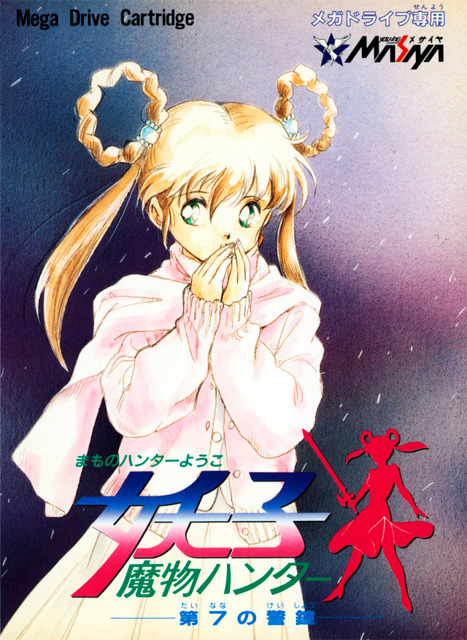
- Developer: Dual
- Publisher: Masaya
- JP Release: 1991-03-22
- NA Release: N/A
- EU Release: N/A
- Franchise: Devil Hunter Yohko
- Genre: Platformer
- Theme: Fantasy / Horror / Anime
- Premise: Teenage devil hunter Yoko must save her friends from a powerful demonic menace in this side-scrolling platformer.
- Availability: Something I've not been paying much attention to is "Project EGG," which sells a lot of obscure emulated Japanese games via a digital distribution client for Windows similar to Steam (but way older). You can buy Dai-7 no Keishou there, but keep in mind that EGG's a subscription service that requires a monthly fee on top of the costs of individual purchases. Otherwise your only option is to import the original Sega Mega Drive version.
- Preservation: No system in the history of this medium has ever been safe from quickie licensed platformer cash-ins, and that's what Mamono Hunter Yohko feels like. It's too difficult by half, has only one cool idea - an energy shield you can either keep around your person for protection or fire outwards as a projectile attack - and no additional power-ups or strategies beyond slashing your sword and trying to not die. We're barely out of the 8-bit generation, granted, but this game feels like a more rudimentary version of something like Mystic Defender (Mega Archive #1) that's coasting on its anime brand recognition. This is Dual's one and only Mega Drive game as far as I'm aware, but they're much more prominent on SNES (where I first encountered them), TurboGrafx-CD, and PlayStation.
117: CrossFire / Super Airwolf

- Developer: A.I.
- Publisher: Kyugo Boueki
- JP Release: 1991-03-29 (as Super Airwolf)
- NA Release: 1991 (CrossFire)
- EU Release: N/A
- Franchise: Airwolf
- Genre: Shoot 'em Up (Vertical) / Top-Down Shooter
- Theme: Modern Military
- Premise: Jump into your high-tech but legally-distinct-from-Airwolf black helicopter to take down enemies in the skies before leaving the safe confines of your cockpit for some base infiltration.
- Availability: Original cart only.
- Preservation: First of all, let's welcome the developer A.I. to the Sega Mega Drive family - they mostly worked with Banpresto on their innumerable Super Robot Wars crossover SRPGs, and like the above Dual were one-and-done as far as the Mega Drive was concerned. For CrossFire they were contracted to the mysterious Kyugo Boueki: a company that briefly joined with Sega to produce arcade games, one of which was a 1987 adaptation of the American TV show Airwolf (about a helicopter called Airwolf). CrossFire is the 1991 console-exclusive sequel to that Airwolf arcade game. However, for reasons presumably related to licensing issues, the Airwolf elements of the game - including its title and a rendition of the theme music - had to be changed for the North American release. I wonder how obvious it was to the kids playing this at the time that it was an Airwolf game in all but name? At any rate, it did the rare shoot 'em up thing of letting you get out and stretch your legs for certain sequences, sort of like Blaster Master or The Guardian Legend (or, to use another later military helicopter example, Urban Strike).
118: Jantei Monogatari
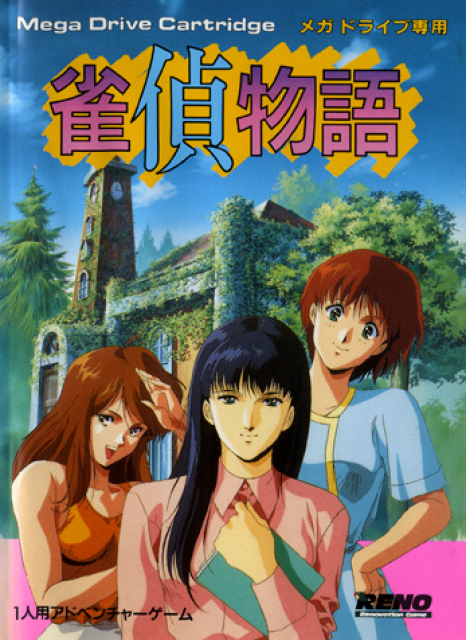
- Developer: Atlus
- Publisher: Telenet Japan
- JP Release: 1991-03-29
- NA Release: N/A
- EU Release: N/A
- Franchise: Jantei Monogatari
- Genre: Mahjong
- Theme: Crime / Anime
- Premise: A private detective is hired to look into the mystery of a missing student. To get to the bottom of this case, he's going to have to beat a lot of nubile teenagers at mahjong. That is some Bruno Sardine: Private Inbreastigator bullshit right there.
- Availability: Japanese Mega Drive cart only. Or you could try the original version for PC Engine CD, which has the benefit of CD music and voiceover.
- Preservation: The system's fourth mahjong game. I gotta say, they're doing a better job pacing themselves with these than the Super Famicom did. Oddly, the first ever Mega Drive mahjong game also had a detective framing story device (Mahjong Cop Ryuu, covered in Mega Archive #2). Looks like this game's mahjong engine is still in the one-on-one phase: a proper mahjong match usually involves three other opponents (a four-person game is even mentioned in the backstory), but that would require a more elaborate AI engine to make happen. Also, is this our first Atlus game for Mega Drive? I believe it is. Too bad they only made two more, both in the far-off year of 1994.
119: Midnight Resistance
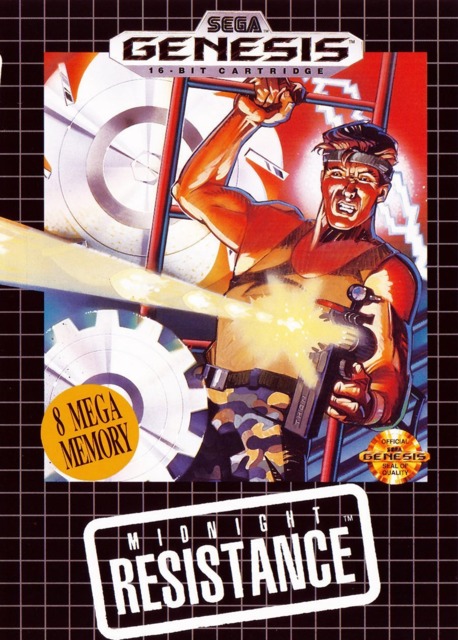
- Developer: Opera House
- Publisher: Sega (NA), Data East (JP)
- JP Release: 1991-03-29
- NA Release: 1991
- EU Release: N/A
- Franchise: Heavy Barrel
- Genre: Shooter (Side-Scrolling)
- Theme: Modern Military / Sci-Fi
- Premise: The evil drug kingpin King Crimson has kidnapped the family of our heroes and only a Commando-style rampage by a couple of 21st century schizoid men can bring them back.
- Availability: Released on lots of systems as well as the Mega Drive. Unfortunately, unlike its predecessor Heavy Barrel, it was not included in the Data East Arcade Classics compilation for Wii or anything else recent.
- Preservation: Midnight Resistance has one of the most well-developed wiki pages on the site courtesy of power user and presumed superfan Fiye. It's strange that it's taken this long to see our second Data East conversion (the first being Darwin 4081, which was adapted by Sega), but Midnight Resistance was one of their more reliable crowd-pleasers. It's the sequel to Heavy Barrel, though that was a top-down shooter (and can be seen, sorta, in the recent couch multiplayer Data East homage Heavy Burger) and this one inhabits more of a chaotic bullet-hell side-scrolling Contra vibe.
120: Shining in the Darkness
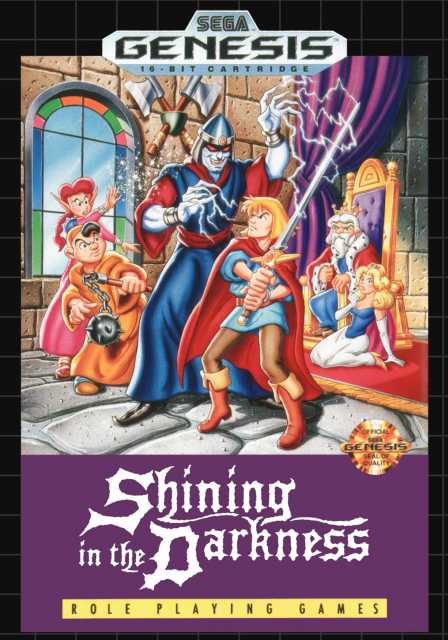
- Developer: Climax Entertainment
- Publisher: Sega
- JP Release: 1991-03-29
- NA Release: October 1991
- EU Release: October 1991
- Franchise: Shining
- Genre: RPG (First-Person Dungeon-Crawler)
- Theme: Fantasy
- Premise: The son of Mortred the Knight is tasked with entering the local dungeon to find where the Princess has disappeared off to.
- Availability: Part of the Sega Genesis Classics compilation available for Steam and current consoles. It can also be purchased standalone from Steam.
- Preservation: Drumroll, if you please. Shining in the Darkness is the first game in what would become one of Sega's most enduring properties: the Shining franchise, a loosely connected series of RPGs of various stripes that still continues today with the likes of 2018's Shining Resonance Refrain. Most proponents of the Shining games look to the Shining Force SRPGs as the standouts but I always had a soft spot for this originator, which is a more traditional Wizardry/Might & Magic style first-person dungeon-crawler with turn-based combat. A lot of what endeared it to its young audience were the cartoon graphics and the streamlined mechanics compared to the heavier D&D CRPGs it was inspired by, though it could still be challenging for the unwary and unprepared.
121: Zan: Yasha Enbukyoku
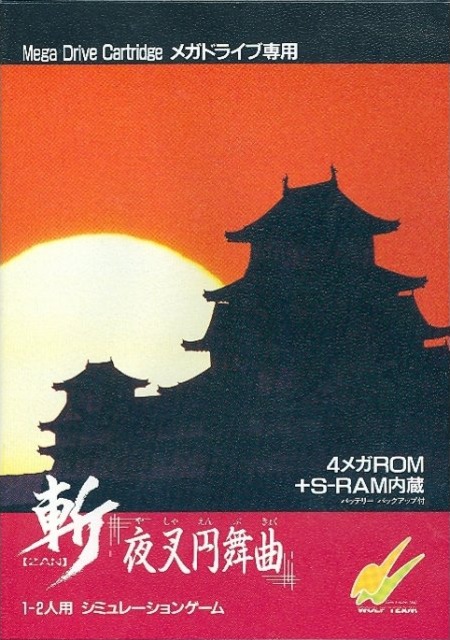
- Developer: Wolf Team
- Publisher: Wolf Team
- JP Release: 1991-03-29
- NA Release: N/A
- EU Release: N/A
- Franchise: Zan
- Genre: Strategy
- Theme: Sengoku
- Premise: You'd think the warring states period was busy enough, but here's a game that presupposes that supernatural spirits were fighting a shadow war in the background.
- Availability: Original cart only.
- Preservation: The first game on my 1991 list that didn't have a Giant Bomb wiki page already. Been a while since we've seen one of those; Sega seems to inspire a lot more dedication from its fanbase. Zan is a dry strategy game franchise in the vein of Koei's Nobunaga's Ambition and was Wolf Team's big flagship series before a little game called Tales of Phantasia came along and changed the company's direction, to put it mildly. You really need a strong mastery of Japanese to play it because like most serious strategy games there's a whole lot of menus and reports to sift through. I like the notion of benevolent and evil folklore creatures fighting each other in the background of the larger human conflict of that period. It feels very Onimusha.
122: James Pond: Underwater Agent
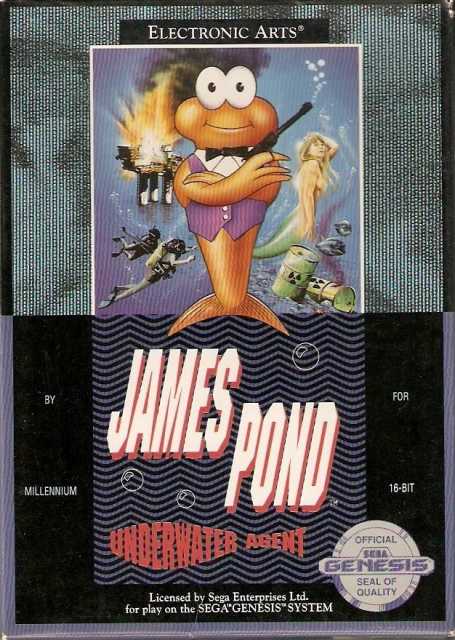
- Developer: Millennium Interactive
- Publisher: Electronic Arts
- JP Release: N/A
- NA Release: 1991
- EU Release: April 1991
- Franchise: James Pond
- Genre: Platformer
- Theme: Espionage / Comedy / Aquatic
- Premise: Secret agent (and fish) James Pond is here to save her Majesty's seas, shoot a lot of bad guppies, and fail to protect Natalya while she's hacking the Goldeneye controls. Sorry, Goldfisheye.
- Availability: Released on various systems at the time, but nothing more recently. There was a terribly-reviewed sequel for iOS a few years ago, James Pond in the Deathly Shallows, and a Kickstarter for a reboot that went nowhere.
- Preservation: James Pond is one of those hometown heroes for us UK players, though I'd argue much of that affection is due to its personality and humor rather than the actual quality. It's certainly innovative to design a whole game where your main character rarely leaves the water - we're still over a year away from Ecco the Dolphin - but late-game James Pond can get a little too chaotic for its own good. I find I prefer its more straightforward sequel RoboCod, even if that game has its own problems (it'll soon be coming up on Mega Archive also). Millennium Interactive is another new developer but the only Mega Drive games they ever created were various James Pond ports. They would later become Sony Computer Entertainment Studio Cambridge (the creators of MediEvil) and then Guerrilla Cambridge before being shut down.
123: Hyper Marbles

- Developer: Sega
- Publisher: Sega
- JP Release: April 1991
- NA Release: N/A
- EU Release: N/A
- Franchise: N/A
- Genre: Action
- Theme: Sci-Fi
- Premise: Two marbles enter the electrodome. One marble leaves. It's marble ma... uh, insanity!
- Availability: Nope. It's another Game Toshokan product, so you're unlikely to find it legally.
- Preservation: Our requisite Game Toshokan entry for this episode of the Mega Archive is the multiplayer sumo game Hyper Marbles. Very simple rules: bash your opponent out of the arena without getting shocked by the electrified barriers yourself. You might recognize this format from the StreetSmash mode of Super Smash Bros. for 3DS if you spent any time at all with that. The Game Toshokan output is already shaping up to be the sort of library you'd find in one of those "100-in-1" unlicensed Famicom game carts, albeit with a little more quality assurance and fewer stolen assets and typos.
124: 16t
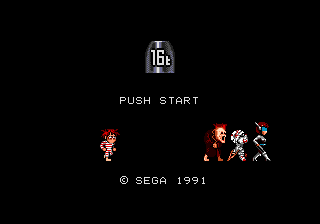
- Developer: Sega
- Publisher: Sega
- JP Release: 1991
- NA Release: N/A
- EU Release: N/A
- Franchise: N/A
- Genre: Platformer
- Theme: Horror
- Premise: Throw weights at incoming enemies across eternally-looping platformer stages.
- Availability: Nope. It's another Game Toshokan product, so you're unlikely to find it legally.
- Preservation: I'm tossing another Game Toshokan in here, because there's a great deal that were released across 1991. Most don't seem to have dates more accurate than "1991", which makes them hard to organize into a chronological order like this. I'm avoiding talking about 16t itself, because it's not only a really slight game but it almost feels like a developer tech demo with a few enemy designs that have no consistency - there are mummies and ghouls, but also a Samus-style female cyborg - and MS Paint backgrounds. Again, much of the Toshokan library feels thrown together over a lunch break in order to make the Sega Meganet service more attractive to would-be subscribers by padding out the total number of games available. Fascinating in its own way too, mind, especially as these all seem to be in-house Sega products.
125: Verytex
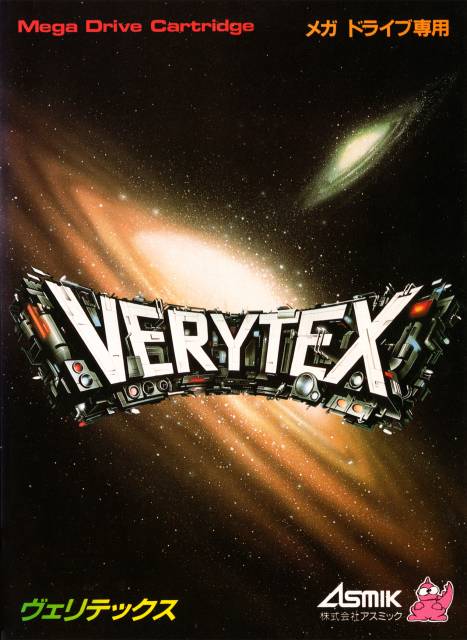
- Developer: Opera House
- Publisher: Asmik Ace
- JP Release: 1991-04-05
- NA Release: N/A
- EU Release: N/A
- Franchise: N/A
- Genre: Shoot 'em Up (Vertical)
- Theme: Sci-Fi
- Premise: The planet of Syracruse has turned on its human colonists despite a galaxy-wide absence of hostile extraterrestrial life. It's up to the pilot of the Verytex ship, so-named presumably because it was built in Dallas and Houston, to find out why.
- Availability: Original Japanese Mega Drive cart only.
- Preservation: I wasn't initially all that enthralled to meet yet another vertical shoot 'em up on a system that has plenty already, but it occurred to me while playing that the music in this game is way better than the generic gameplay deserves. Lo and behold, the main music and sound designer credited is one YmoH.S.: the alias used by none other than Hitoshi Sakimoto, composer of Vagrant Story, Final Fantasy Tactics, Valkyria Chronicles, and at least a dozen other of my favorite video game soundtracks. This was one of his earlier freelance projects before he was recruited by Quest Corporation (and subsequently Squaresoft after they bought Quest). A minor footnote in the grand scheme of things perhaps, but it brightened up an otherwise dull screenshot-gathering playthrough. The full soundtrack is on YouTube if you're curious.
126: Ka-Ge-Ki: Fists of Steel
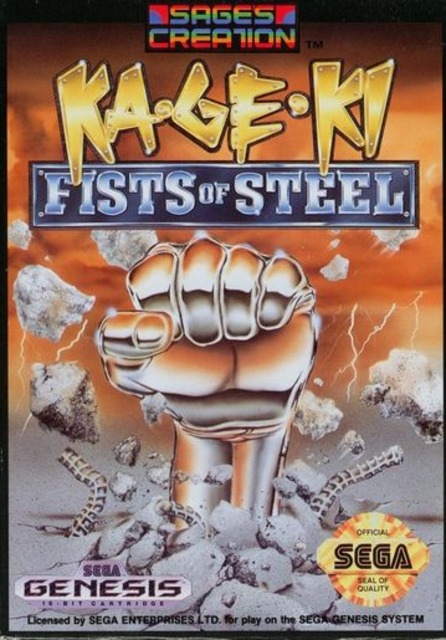
- Developer: Hot-B
- Publisher: Hot-B (JP), Sage's Creation (NA)
- JP Release: 1991-04-26
- NA Release: June 1996
- EU Release: N/A
- Franchise: N/A
- Genre: Boxing
- Theme: Crime
- Premise: Fight your way through various gang members in this truly hideous bare-knuckle boxing brawler.
- Availability: Unless there's an unholy ritual on a night when the planets are aligned, I don't think this one's coming back.
- Preservation: There's some real confusion online as to whether Kaneko developed this home port of their gritty Ka-Ge-Ki arcade boxing game - in which case it would be their first for the Mega Drive - and had frequent contract developer Hot-B publish it for some reason, or Hot-B handled both development and publishing like they did with Taito's Insector-X (Mega Archive #4). I'm inclined to believe the latter. Ka-Ge-Ki attempts to frame a gangbanger brawler like Renegade with the controls and movement of a boxing simulator like Ring King, with limited success.
127: Warsong / Langrisser
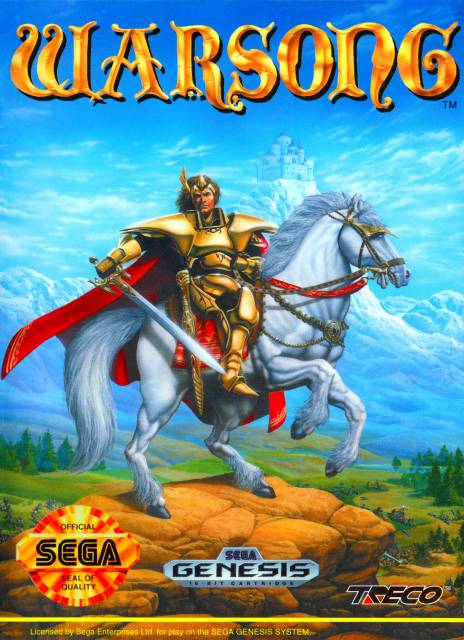
- Developer: Masaya
- Publisher: Masaya (JP), Treco (NA)
- JP Release: 1991-04-26 (as Langrisser)
- NA Release: March 1992 (as Warsong)
- EU Release: N/A
- Franchise: Langrisser
- Genre: Strategy
- Theme: Fantasy
- Premise: The Kingdom of Baltia is suddenly attacked by the Dalsis Empire and its legion of monsters, and Prince Garrett is one of the few to escape the invasion safely. He must now raise an army to take back his homeland.
- Availability: It's been remastered and rereleased a few times for other systems, but only in Japanese. However, the most recent Langrisser I & II remaster (remake, really) only just came out in Japan so it may yet see a localization.
- Preservation: I know serious strategy RPG nuts have a soft spot for Masaya's Langrisser games and its successor Growlanser. Very few of them were ever officially localized into English, but its combination of Fire Emblem hero units and the disposable troop management of an Advance Wars made it stand out, especially against Climax's own Fire Emblem competitor Shining Force (though I doubt many would argue that Warsong is the better game of the two). North American publishers Treco decided to touch up a few of the character portraits to make them "less anime" for Warsong, which was just something American publishers did back then without consequence. What an enlightened age we live in now, where if a localizer lowers the hemline of a 12-year-old's mini-skirt by even a millimeter they would have to enrol in the FBI's witness protection program and vanish forever.
128: Wardner
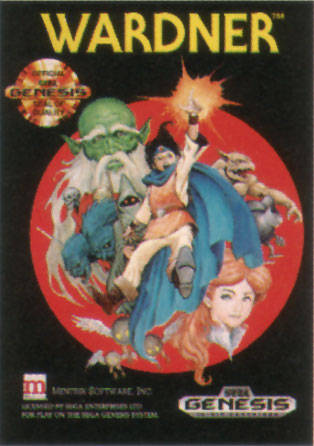
- Developer: Dragnet
- Publisher: Visco (JP), Mentrix Software (NA)
- JP Release: 1991-04-26
- NA Release: May 1991
- EU Release: N/A
- Franchise: N/A
- Genre: Platformer
- Theme: Fantasy
- Premise: Dover's companion is kidnapped by a mysterious hooded figure in the forest of Wardner, and so Dover decides to burn that mother down with his fireballs.
- Availability: None, besides the original cart or - if you really wanna get wild - the Famicom Disk System port. It's another Toaplan game, or at least it was originally, and they didn't stick around long enough to see arcade compilations.
- Preservation: I want to say the original arcade Wardner was riffing off Westone's Wonder Boy franchise, as there weren't too many arcade side-scrolling platformers with dumpy heroes flinging projectiles everywhere. It wasn't one of Toaplan's best, and I think at this point the "port everything Toaplan ever made to the Mega Drive" strategy was running out of steam. Doesn't help that this game is hideous on top of being antiquated and far too tough. GamePro gave it a "wild-haired lunatic" for "Gameplay" back at time at release, though, so what do I know. Honestly, any Mega Drive platformer that didn't kill you because you failed an arbitrary rock-paper-scissors match is a step up. Dragnet's a new developer, but I have no idea who they are: they appear to be contract devs often brought in to punch up a game's coding, so they might not be the only developers behind this game.
129: Shikinjou
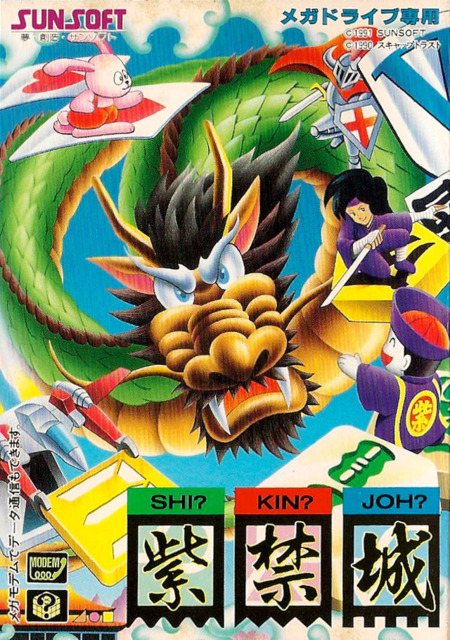
- Developer: Sunsoft
- Publisher: Sunsoft
- JP Release: 1991-04-27
- NA Release: N/A
- EU Release: N/A
- Franchise: N/A
- Genre: Puzzle
- Theme: Chinese
- Premise: Get a hopping vampire to the exit in this tile-pushing melon-scratcher.
- Availability: It feels simple enough that it probably exists out in the wild as a free browser game or something.
- Preservation: Shikinjou, named for China's Forbidden City, is an atypical mahjong solitaire variant I've seen before during my travels into the Super Famicom library. It's not so much a traditional mahjong solitaire game - like, say, Shanghai - than it is a Sokoban game in disguise. The idea is to push mahjong tiles around until you have a clear path to the exit, but it's never as straightforward as it looks and you can very easily mess up and have to start over. Sunsoft plucked this one out of the home computer market and gave it modem support for its Mega Drive port, which was still a rare selling point at the time. It's a one-player game, so I believe the online aspect came from the level creation mode - i.e. you built puzzles for your friends to download and solve, and vice versa.
130: Sangokushi Retsuden: Ransei no Eiyuutachi
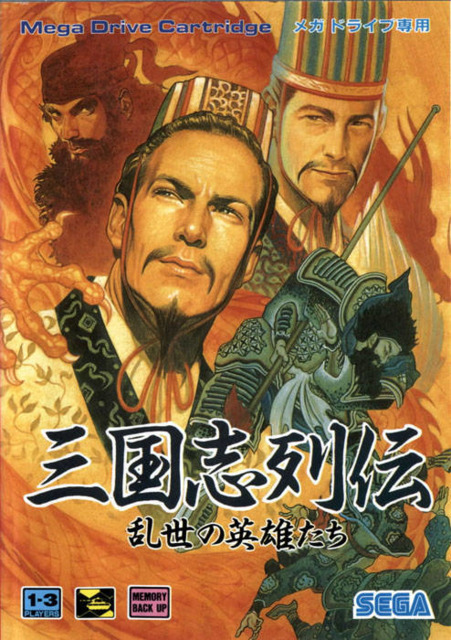
- Developer: Sega
- Publisher: Sega
- JP Release: 1991-04-29
- NA Release: N/A
- EU Release: N/A
- Franchise: N/A
- Genre: Strategy
- Theme: Three Kingdoms Era
- Premise: It's time to finally reunite China after those pesky Yellow Turbans have been dealt with. Just once in one of these games I want a fourth kingdom to show up and say "hey, what's crackin'?"
- Availability: Original MD cart only. Or you could just play whichever the most recent Romance of the Three Kingdoms game is, or maybe even Total War: Three Kingdoms or Dynasty Warriors 8: Empires. "Where there's a will there's a Wei," as I always say.
- Preservation: Mere months after publishing Bahamut Senki (Mega Archive #7), which was just another one of these with a fantasy setting, Sega decided they couldn't wait forever for Koei to put a Sangokushi (Romance of the Three Kingdoms) game on their platform and just made their own instead. It's not entirely clear if Sega created this themselves or outsourced some Koei folk or a contractor like TOSE to develop it for them, because they must've been elbow deep in Sonic the Hedgehog by this point (ew, phrasing). This is just as impenetrable as any of Koei's offerings with or without the language barrier, so I guess it scores points for accuracy.
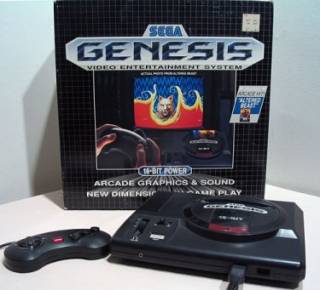
Log in to comment